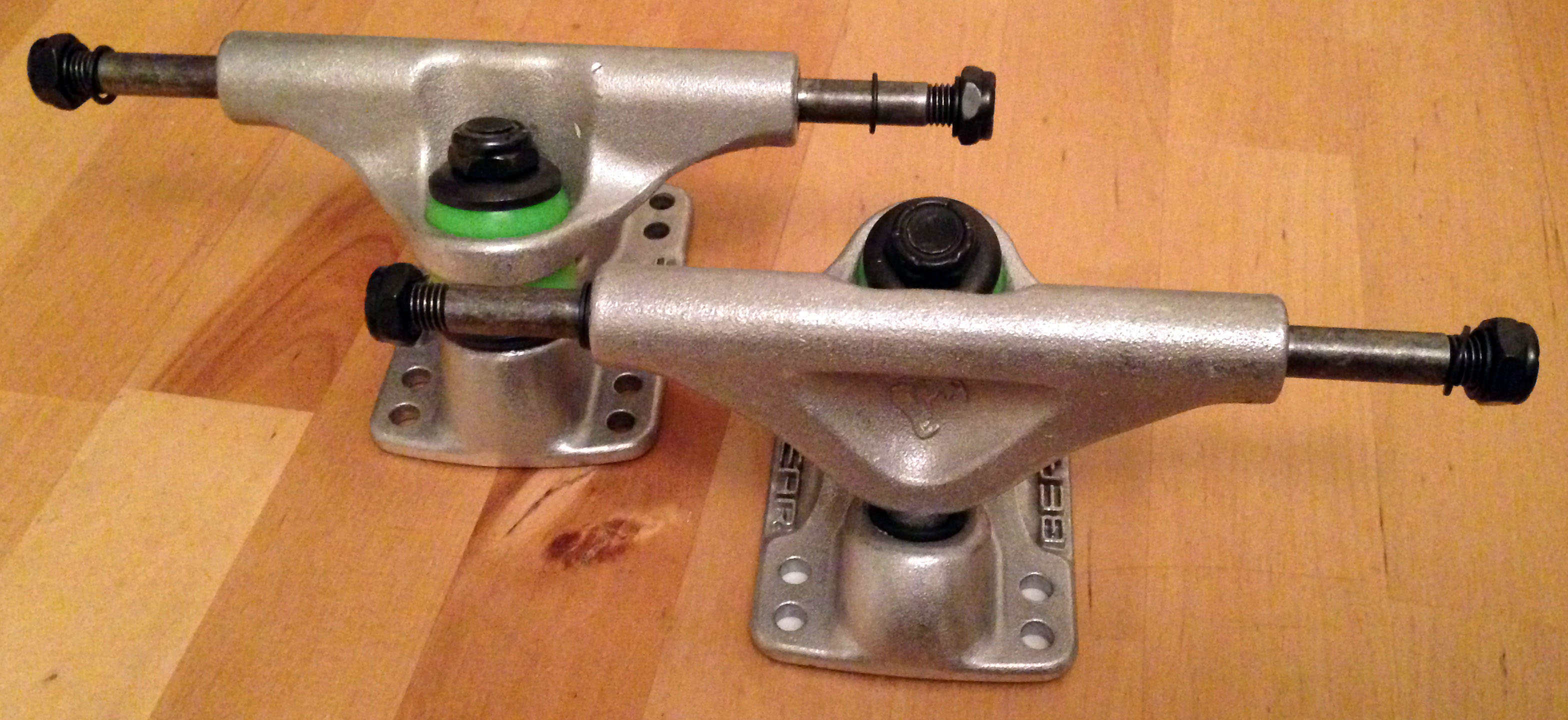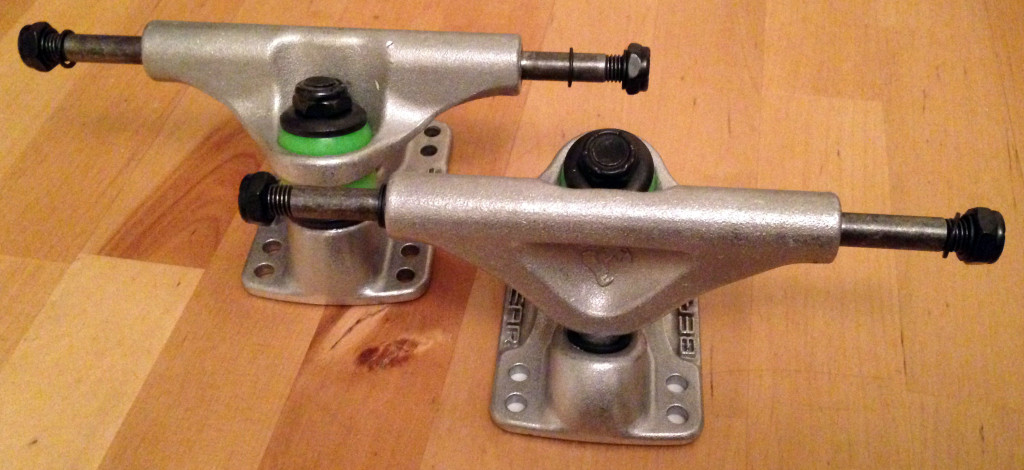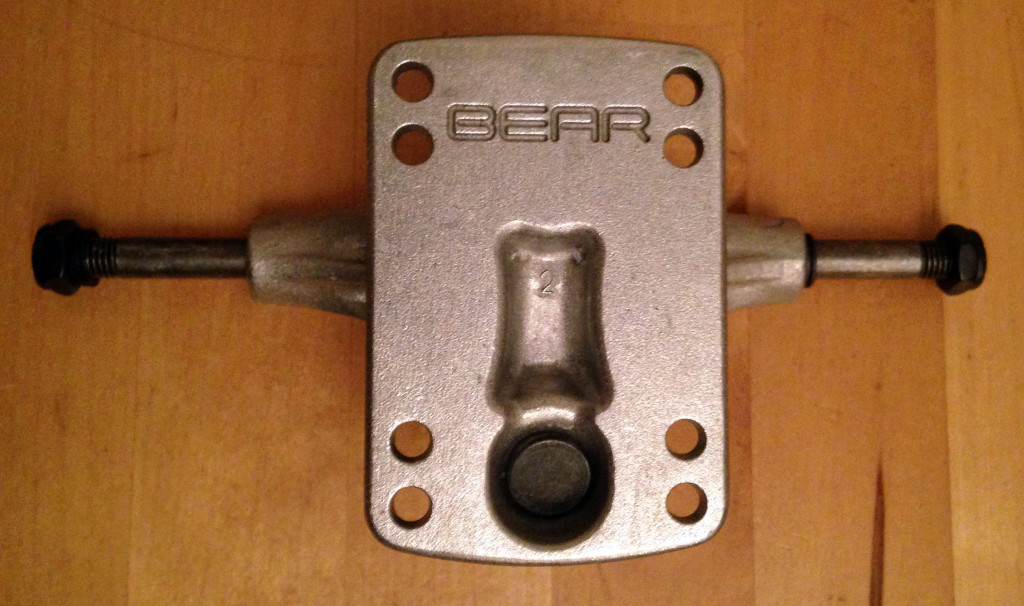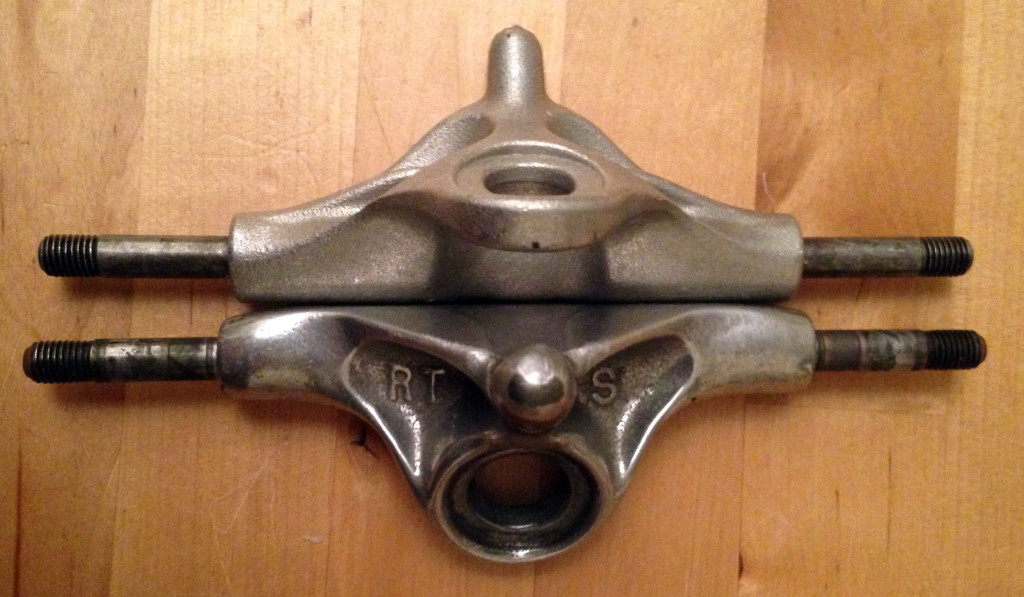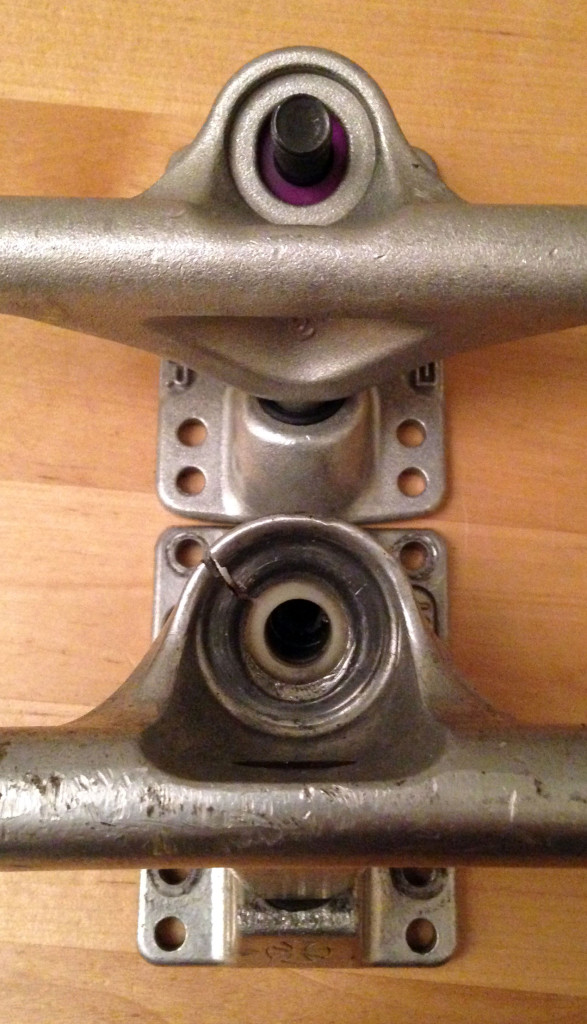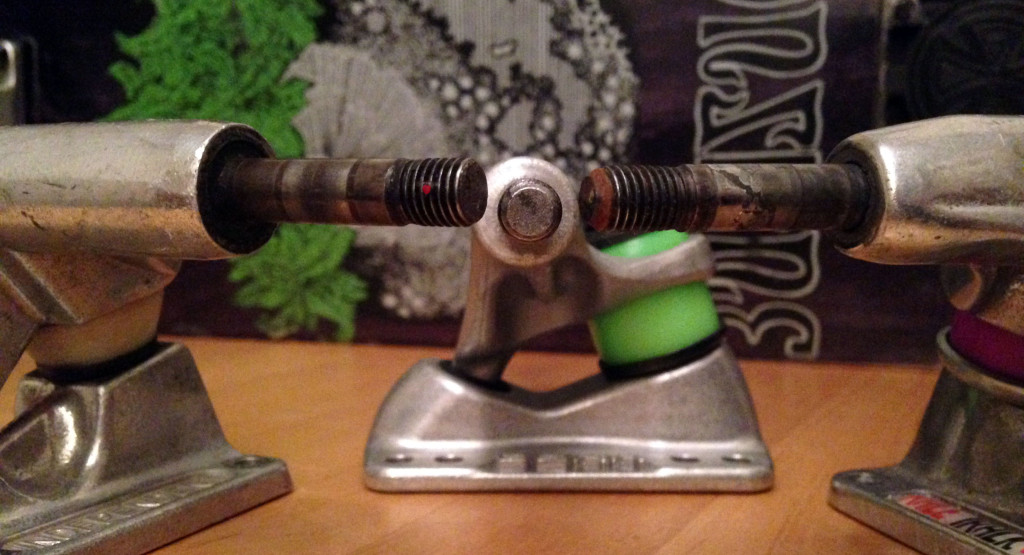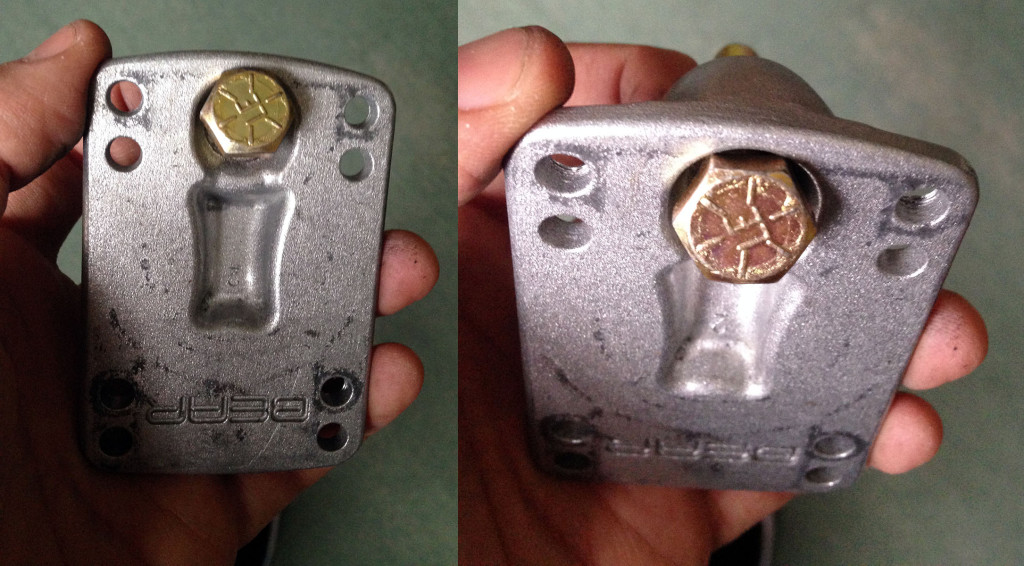And while the turning might be the last thing many freestylers will care about, I’ve got to say this: they do turn well. I took out three different freestyle setups to compare turning performance (all with 10Xmm trucks, purple Khiro bushings and Seismic wheels to eliminate as many variables as possible), and while the Racetrack S possibly provided the best general turn for freestyle, with the most predictable and stable performance throughout the carve, the Bears were effectively an improved Indy, featuring Indy’s willingness to turn without Indy’s tendency to “dive” into it. What this translates to in freestyle is that you don’t need to crank the truck nut all the way down to remove instability, and can keep some turning performance without compromising the predictability of more technical or awkward tricks. Hopefully, it should also result in fewer broken kingpins, as they’re not under as much stress as the average Indy 109mm or Tracker Racetrack X setup; whether that will prove correct or not will only be seen in time.
On the kingpin front, Bear are also using the modern splined kingpin, which means Tracker may be the only holdout in the 10Xmm size still using the good ol’ hex head kingpin as standard. (For those who haven’t heard the debates on the podcast about why hex heads are arguably better, they’re not only generally easier to remove, they’re cheaper to replace due to the fact they’re just a standard grade 8 bolt.) However, having knocked out the original splined kingpin (which came out surprisingly easily, and I’m not sure whether or not that’s a good thing), it looks almost like the baseplate might be able to grip a hex head kingpin if one was installed. Again, until I snap a kingpin, I won’t know for sure, but it looks like a possibility.
So, overall, the Bears are good. For those who are looking for a low truck, the Bears should be a no-brainer over every other option at this size. I’ll certainly be recommending them over the Indy and Paris trucks wherever possible; I think they’re a much more solid and interesting alternative, with a lot going for them. Another benefit (in the UK at least) is the price – a set of Indy 109s or Paris 108s will typically be around the £50 mark before you even factor shipping into the equation, but the Bear Polar 105 can be had for £37.99 + postage. Against the comparatively-priced Trackers, it’s a bit more even – the Racetrack X is similar geometry and the Racetrack S is arguably a better ride, but the Bears are probably more suited to freestyle than the S (which really suffers under the stress of coconut wheelies) and the X due to the lower kingpin and the wheelbase adjustment options.
The downside is that they’re really hard to find – in the UK at least. As I write there’s a couple of sets on eBay, so grab them now if you’re interested. I think in the US you can buy from Landyachtz direct, but I’m not sure what their distribution is like otherwise. Still, hunt some down – you won’t be disappointed.
